While this midwestern state boasts plenty of Cheeseheads, there are also a number of endangered animals in Wisconsin. Also known as America’s Dairyland, Wisconsin is home to rolling plains, farmlands, and the Great Lakes to both the east and north. This presents a challenge to many animals that call Wisconsin home. How can we continue to provide a safe haven to our endangered species in a place full of agricultural industry?
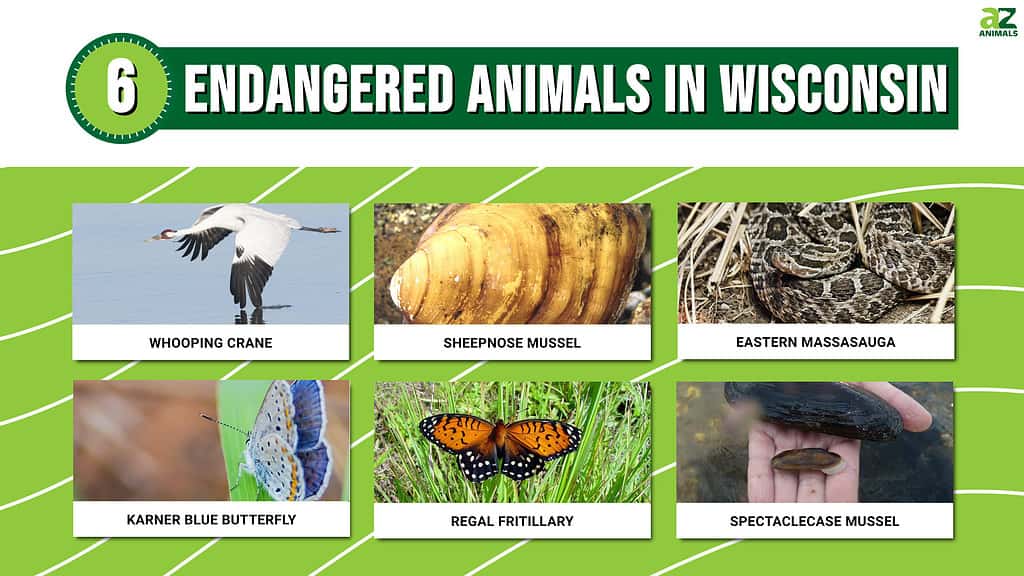
In this article, we’ll take a closer look at some of the most endangered animals in Wisconsin, both on land and in water. We’ll discuss what makes these animals special as well as why their populations might be declining. Through education and awareness, many animal species can be saved, including ones residing in this midwest state. Let’s get started!
Endangered Animals In Wisconsin

Also known as America’s Dairyland, Wisconsin is home to rolling plains, farmlands, and the Great Lakes to both the east and north.
©iStock.com/Oleksii Liskonih
There are many threatened animal species in Wisconsin, but less than 20 are endangered according to the IUCN Red List. However, some of these animals are critically endangered, if not nearly extinct. From migrating birds to small butterflies, here are 6 fascinating and endangered animals in Wisconsin.
Whooping Crane

Wisconsin is a special place in that it is the first location where whooping cranes have nested naturally in over 100 years.
©Kent Ellington/Shutterstock.com
Officially declared as endangered as early as 1967, whooping cranes are extremely rare in the wild. However, Wisconsin is a special place in that it is the first location where whooping cranes have nested naturally in over 100 years. This is largely credited to the Whooping Crane Eastern Partnership Reintroduction Project. This is a conservation effort dedicated to restoring the wild population of whooping cranes.
We have not treated whooping cranes fairly in their lifetime. Not only are whooping cranes an endangered animal in Wisconsin, but they were nearly pushed to extinction in the 1940s. Continued habitat loss and hunting keep whooping crane populations at risk. However, education and cooperation throughout the United States have helped bring some whooping crane populations back from the brink!
Sheepnose Mussel
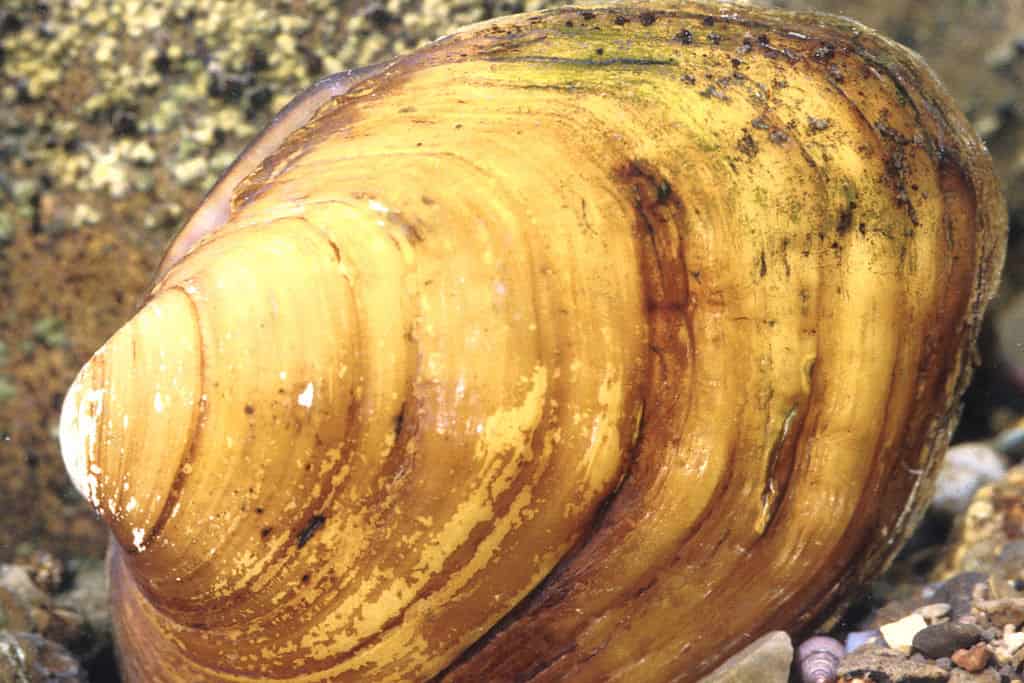
This freshwater mollusk is no longer found in two-thirds of its historical range.
©Dick Biggins, U.S. Fish and Wildlife Service, Public domain, via Wikimedia Commons – License
Classified as Plethobasus cyphyus, the sheepnose mussel is endemic to the United States. It is particularly native to the midwest, including Wisconsin. However, more than 75% of its population is gone, no longer to be found in the freshwater rivers it once called home. Among other species of freshwater mollusks, the sheepnose mussel reaches no larger than 5 inches on average. Pollution, habitat loss, and increasingly silty rivers are the primary causes of this mussel’s decline.
Eastern Massasauga
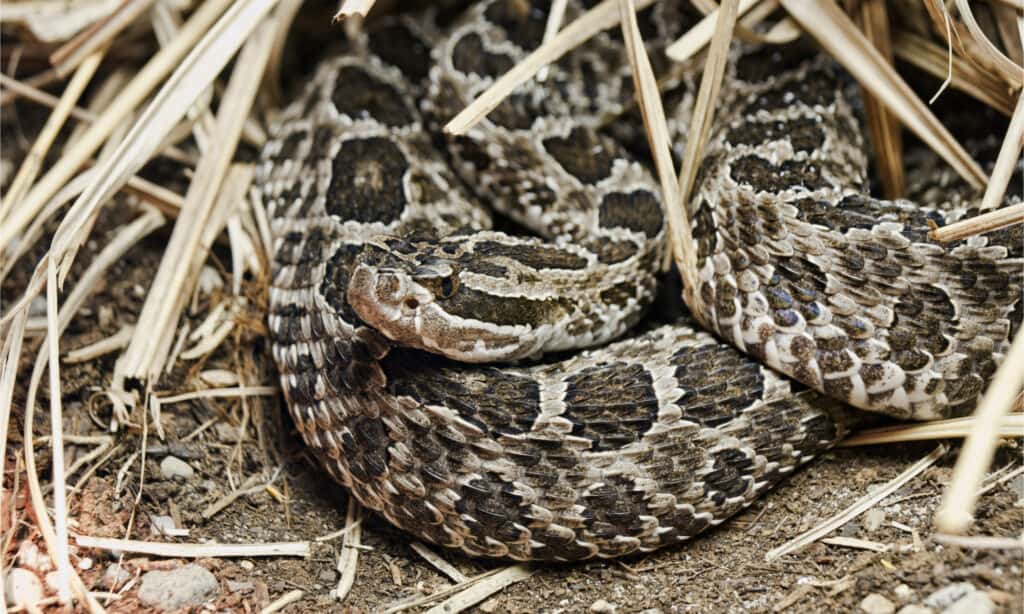
While venomous and capable of killing adult humans if its bites are left untreated, the Eastern massasauga is shy and doesn’t often interact with people.
©DnDavis/Shutterstock.com
While not technically endangered according to the IUCN, the Eastern massasauga is a type of rattlesnake that is endangered specifically in Wisconsin. It is also endangered in a few other midwest states, including Iowa and Indiana. While venomous and capable of killing adult humans if its bites are left untreated, the Eastern massasauga is shy and doesn’t often interact with people. However, persecution, as well as habitat loss, are the primary killers of this rattlesnake.
Karner Blue Butterfly
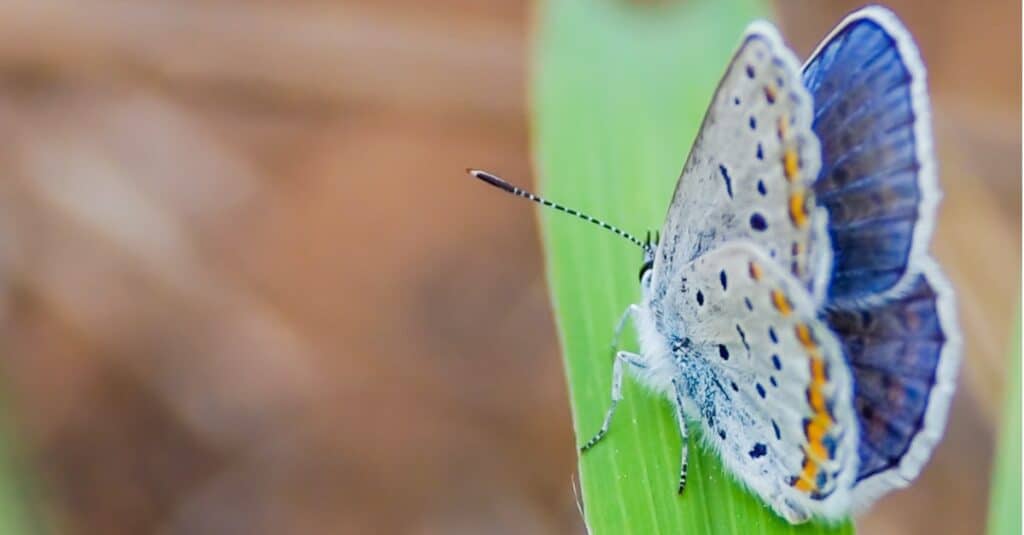
The Necedah National Wildlife Refuge has one of the biggest and healthiest Karner blue populations in the world.
©iStock.com/BobGrif
While endangered throughout the United States, the Karner blue butterfly thrives in Wisconsin. In fact, the Necedah National Wildlife Refuge has one of the biggest and healthiest Karner blue populations in the world. However, this is still not enough to save this beautiful butterfly all on its own. The Karner blue butterfly suffers from habitat and food loss, due to the fact that it primarily feeds on blue lupine in wild fields. While Wisconsin protects this blue beauty as best as it can, it is still an endangered species.
Regal Fritillary
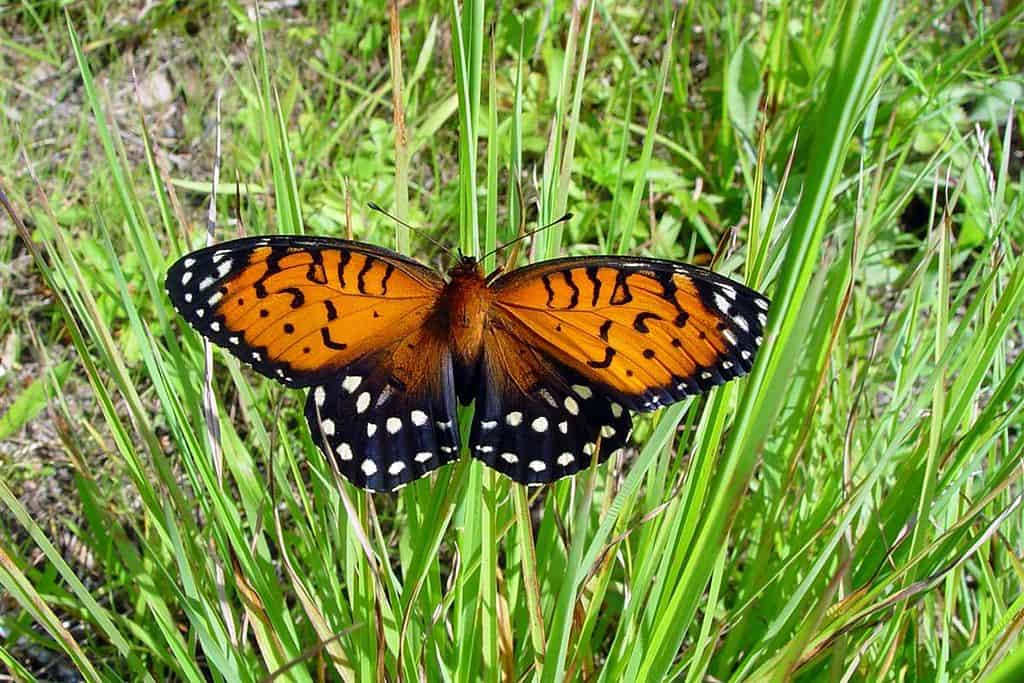
The regal fritillary (Speyeria idalia) only produces one brood per year.
©Pennsylvania Army National Guard, Public domain, via Wikimedia Commons – License
Another beautiful and endangered animal in Wisconsin has to be the regal fritillary. This butterfly has unique and distinct markings on its wings, with a row of spots along the base. It needs prairies and other tall grasslands to feed and reproduce, which is why the Midwest is the primary region it inhabits. Regal fritillary butterflies only produce one brood per year, which means that their protection is even more complicated and difficult to achieve.
Spectaclecase Mussel
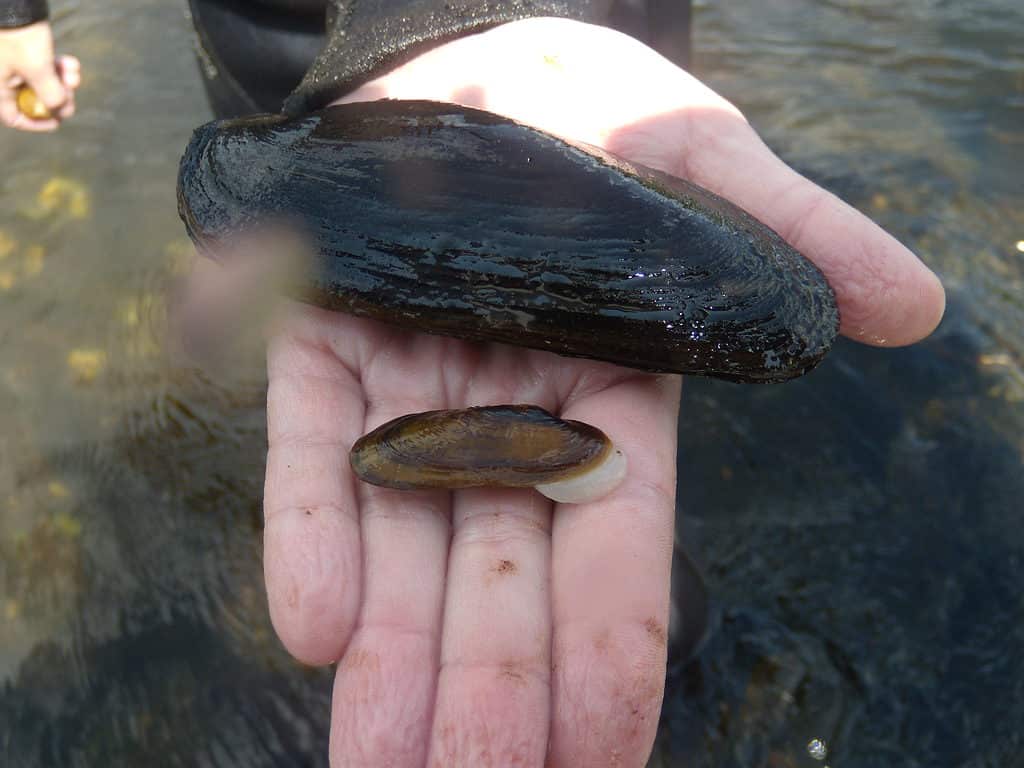
Spectaclecases often grow larger than 9 inches in length and live in small clusters, distributed in freshwater rivers sporadically.
©3,264 × 2,448 pixels, file size: 1.62 MB, MIME type: image/jpeg – License
While bivalves may not be the most recognizable of endangered species, the spectaclecase mussel is another one in Wisconsin. It has been listed as endangered in many states as well as federally since 2012, though there are no official conservation efforts being made. Spectaclecases often grow larger than 9 inches in length and live in small clusters, distributed in freshwater rivers sporadically. While pollution is a huge cause for the decline of most spectaclecase populations, the invasive zebra mussel is also a primary concern.
The photo featured at the top of this post is © Michele M Vogel/Shutterstock.com
Thank you for reading! Have some feedback for us? Contact the AZ Animals editorial team.






